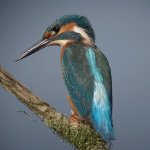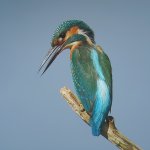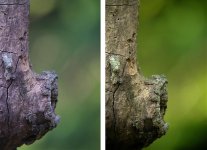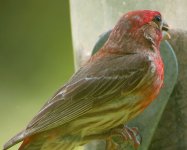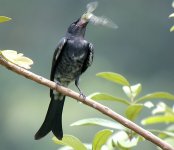My suspicion was that the mechanical shutter in the SLR was jarring the camera, even though the mirror was locked up and a 6 second time delay was used. Of course this has been a decades old contention even with conventional lenses.
I hope to publish side by side test photographs showing the best effort shots with a SLR and a Digicam using the same scope, target, and environmental conditions.
Gene Smith
Added: The problems are with the longer focal length lenses, 800mm and 1200 mm telescopes. These are 4 inch and a 10 inch dia. Dob. type mount.
As someone who uses a DSLR on long spotters and astro scopes I agree.
The movement from the mirror can be a real problem. In fact on certain
mounts I can release the shutter remotely while sighting down the barrel
of the scope and watch the objective end shake from mirror slap.
It can be minimized however. I found that once I changed to a gimbal
fork mount, a Manfrotto 393 (Bogen 3421), most of these issues just went
away. Set up this way I can typically shot at 1/100 of a sec with no
problem. I think it's an issue of balance. Although you can achieve
perfect balance on any mount with a sliding dovetail plate on the
horizontal the center of gravity shifts when you shift the scope up or
down (tilt). On a fork mount this is not an issue. Balance the scope
perfectly on the horizontal and then tilt the scope up or down and let
go and it just stops moving - rock solid.
Speaking only for myself, I tried the conventional PS digiscoping method
and gave up on that. For me it's just too slow, clumsy, awkward and with
poor uncertain results. I like to concentrate on fast moving passerines
and found the PS method just does not cut it for my purposes. Perhaps I
have a unusually low frustration level but a PS camera is just too klutzy
and slow and the results poor for what I want to do.
But different strokes for different folks I guess.
SF
Taken with a gigantic 1000mm FL astro scope in prime focus. This scope
is over 50 inches long with camera and extension tubes hanging off the
back end and mirror slap is not a big issues on my setup. Not a
practical setup for most but an example of what a proper mount can do.
1/125 sec. No shutter delay, mirror lock up nor remote release just normal manual shutter release. ISO 200




